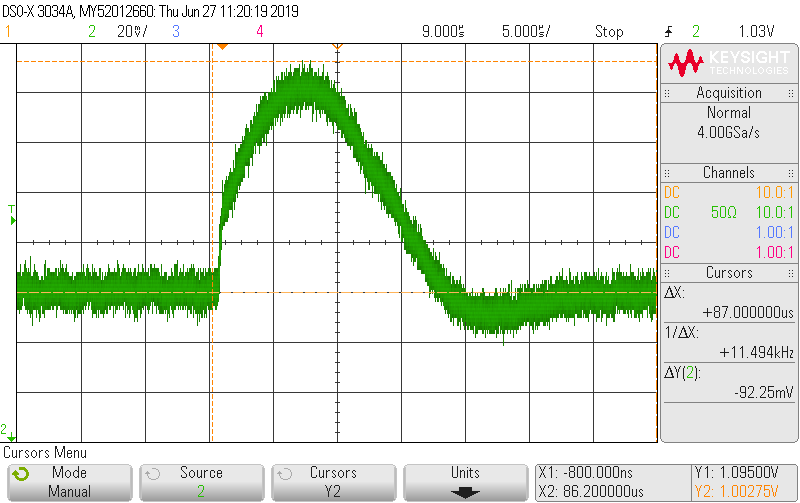Hello,
I have a design with the TPS56C21 these are the main Regulator parameters as recommended by webench power designer:
Vin: 12V, Vout: 1.0V
Iout: 8Amps
Fsw: 400KHz (selected by me, to decrease IC power)
L: 1u2
Cout: 9 x 47uF (MLCC-
This design drives a FPGA power rail. In the bench test I noticed a large and fast load transient when the FPGA ends the code configuration.The regulator bulk caps are not large enough to absorb this transient before the IC reacts, bringing the 1V0 rail close to 1V1 which is the ABS max of the FPGA.
My believe is the transient is purely due to the lack of bulk capacitance. Changing the SW frequency to 800KHz doesn’t seem to help. Increasing the bulk capacitance from 423uF to 900uF with 9 x 100uF (MLCC – ESR: 2mOhm) reduces the overshoot to 60mV with no noticeable stability issues.
I noticed the 500uF max limit in the TPS56C215 spec sheet. I’d like to be conservative and increase Cout to 600uF (6 x 100uF). My questions are:
- How confident can I be there won’t be stability problems with 600uF given it works fine in ONE circuit?
- Is there a easy way to determine the stability margin with 600uF? (webench Designer doesn’t allow me to go over 500uF)
Thanks,
JMR



